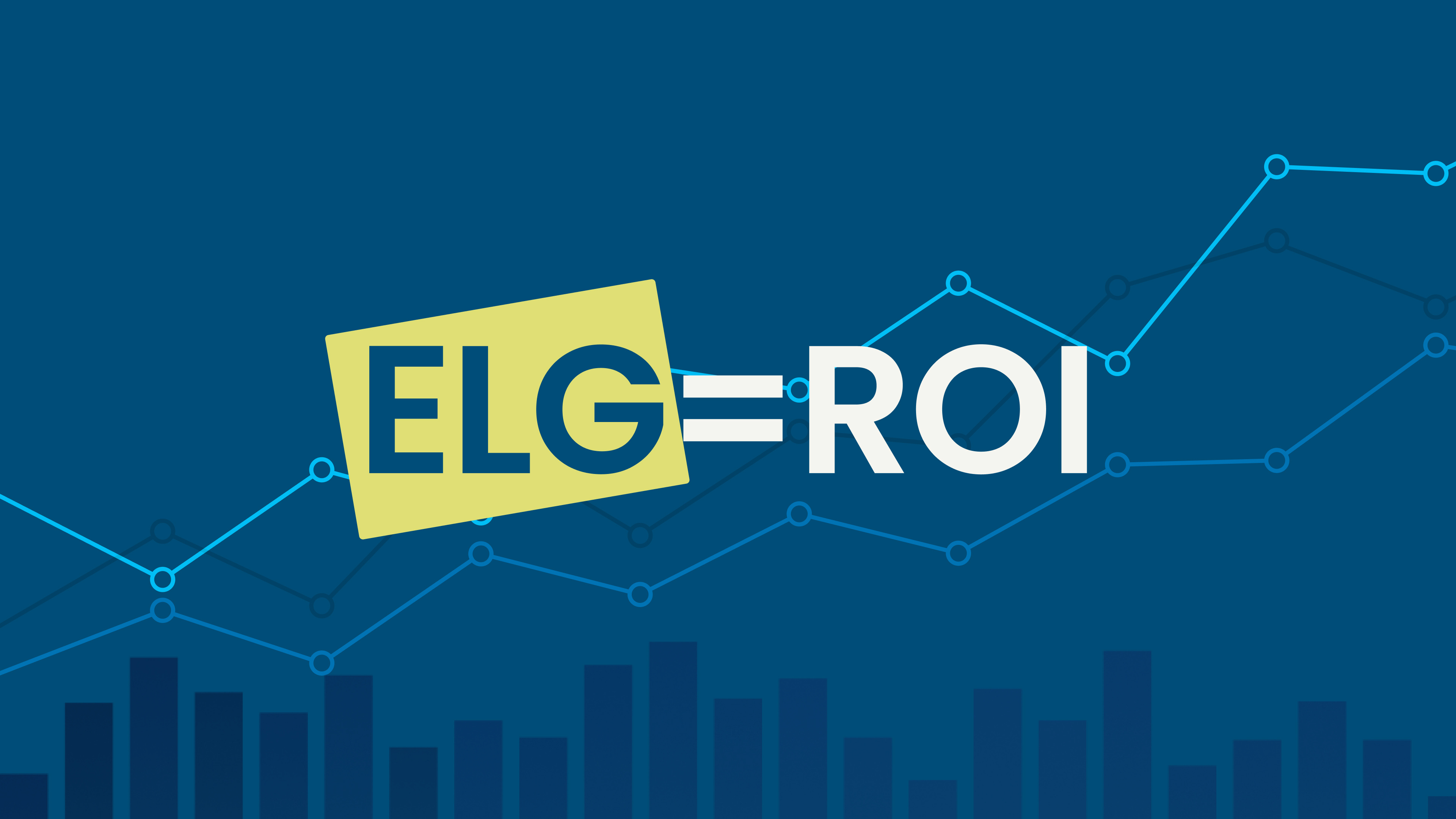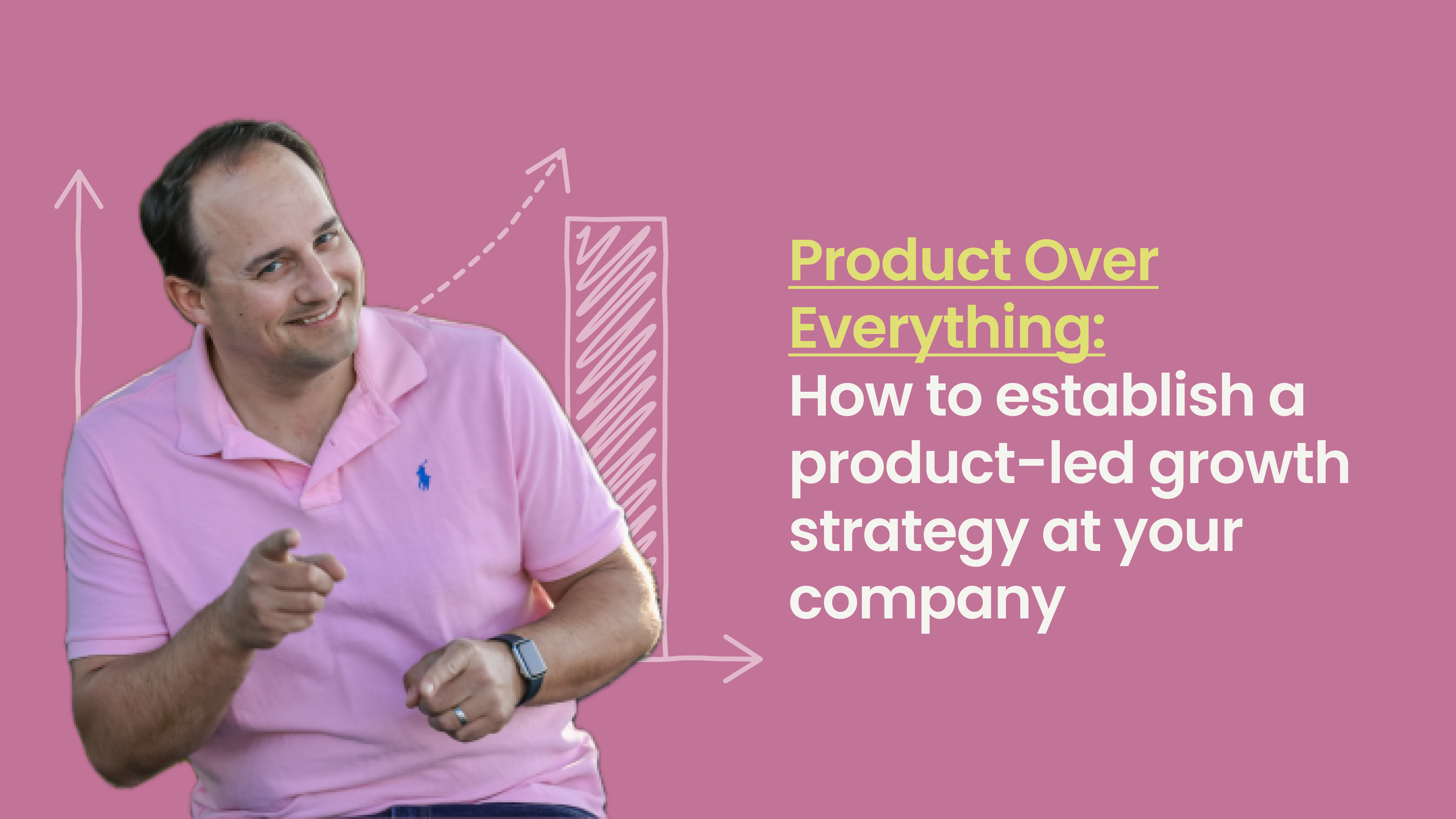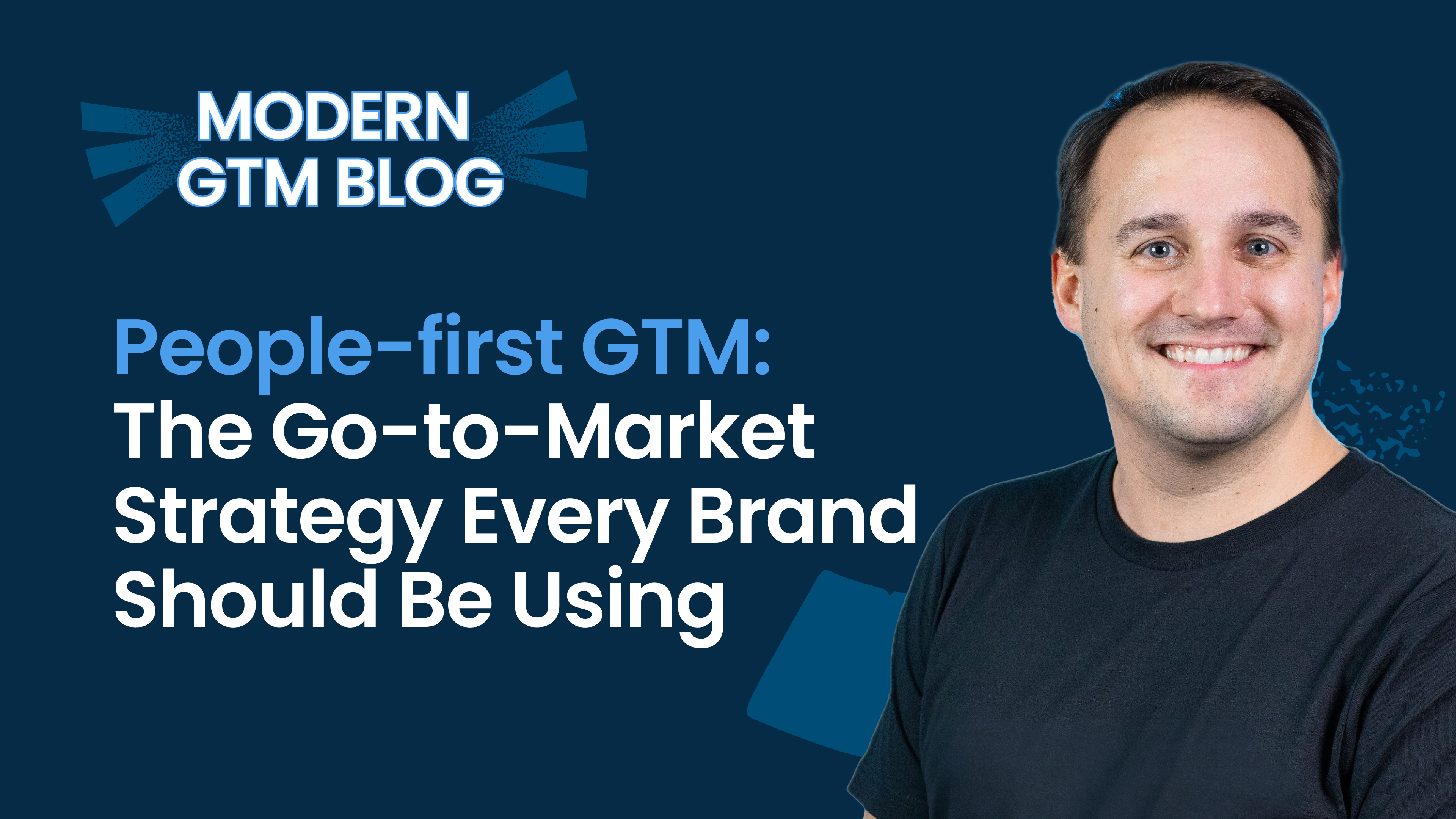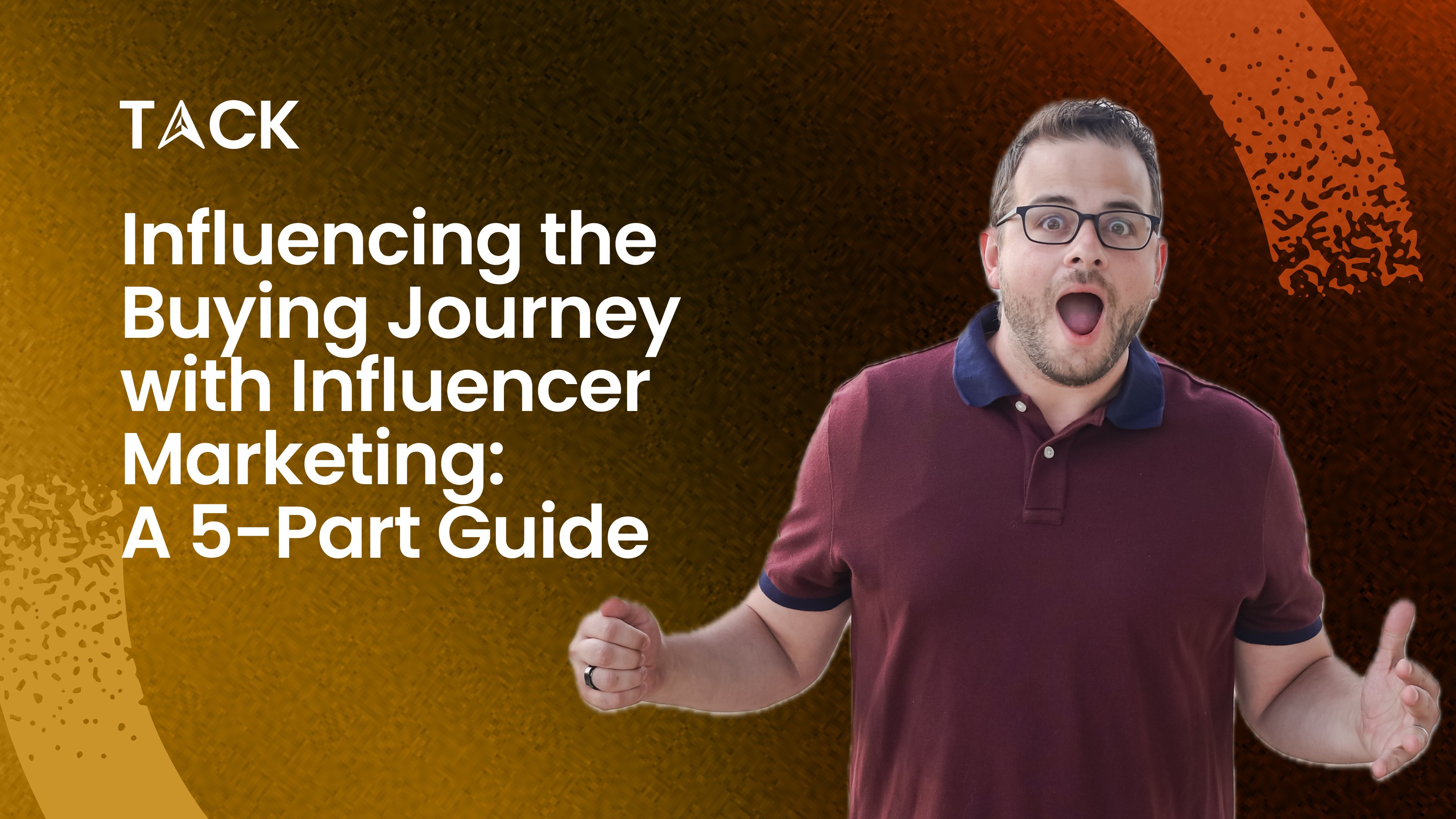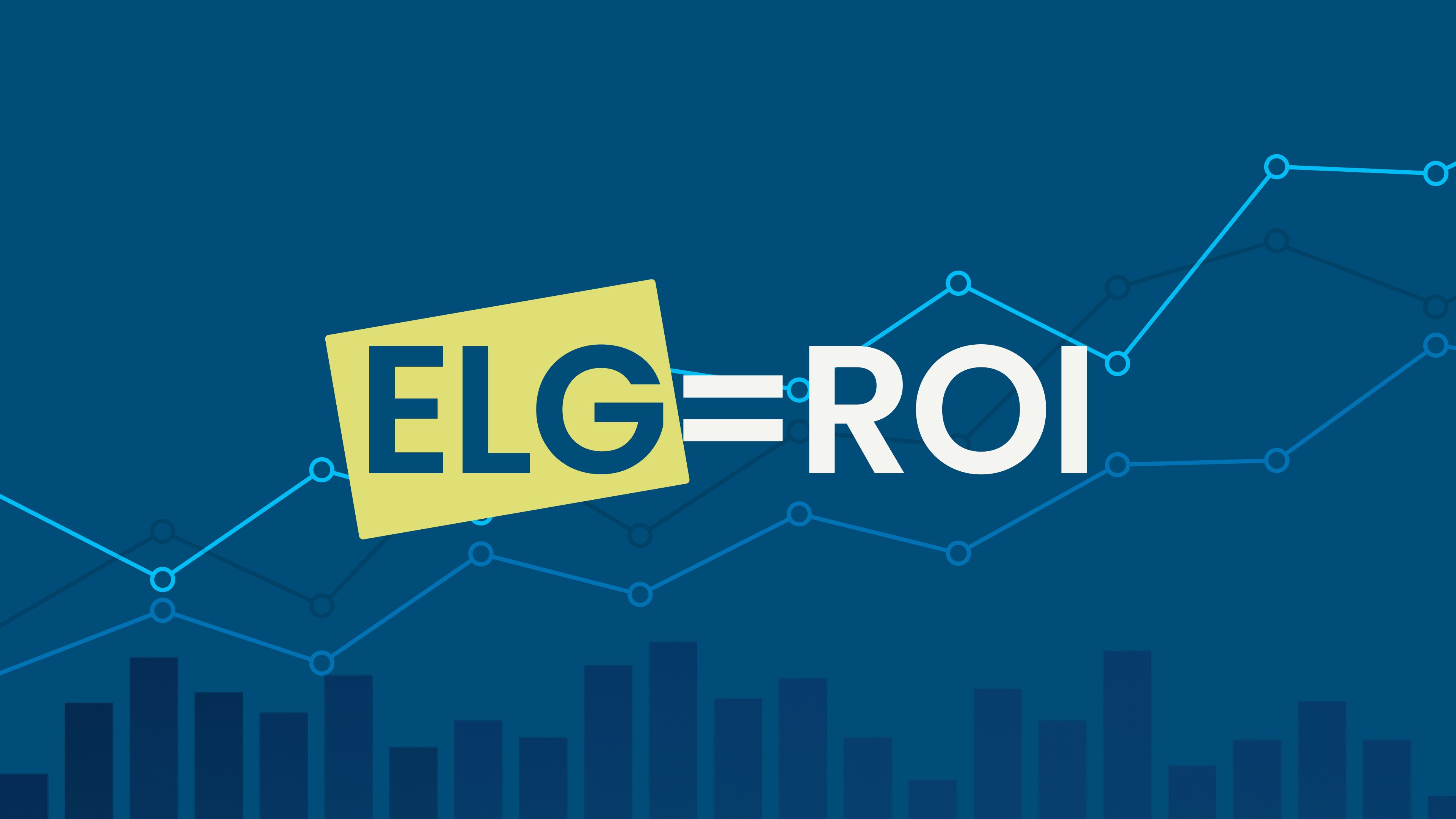
Event-led Growth: Developing a B2B Event Marketing Strategy That Drives ROI
What does it mean when your email invites are sent to spam, your booth at trade shows attracts people who work at the venue more than your ICP, and your webinars have lower attendance than a poetry reading at a monster truck rally?
No, it doesn’t mean “events are dead”. It means it’s time to rethink your B2B event marketing strategy.
Event-led growth is a powerful, strategic approach for savvy B2B marketers who understand that experience still reigns supreme.
But remember one thing: not all events are created equal. And if you're still relying on the same tired tactics from a few years ago when most of us were stuck indoors, you might as well be shouting into the void or at that monster truck rally.
So if you’re ready to rethink what events means for your go-to market strategy, read on. By the time we're done, you'll be armed with the knowledge to turn your events from budget sinks into ROI-generating powerhouses.
But first we need to talk about the elephant in the room.
Table of contents
- Why Most B2B Events Crash and Burn: The ROI Conundrum
- Understanding Event-Led Growth in B2B
- Planning Your B2B Event Strategy
- Maximizing Event
ROI Through Content and Engagement - Measuring and Optimizing Your Event Marketing Strategy
- Navigating Common Pitfalls in Event-Led Growth
- The Importance of Technology for Successful Events
- Integrating Events with Other Marketing Channels
- Conclusion
Why Most B2B Events Crash and Burn: The
ROI Conundrum
The average B2B event falls into two categories: an overwrought powerpoint presentation or an expensive party.
But why? Why do so many well-intentioned marketers end up with events that are more 'money pit' than 'profit center'?
It’s simple: most events fail to deliver ROI because they're approached like a sprint rather than a marathon. Instead of building up stamina over time and choosing your moments to give it a burst of speed, many marketers go all out for a short burst.
The reasons are plentiful:
-
Spray and Pray Mentality: Inviting everyone with the hopes someone relevant shows up doesn’t work. Year after year we’ve seen that quantity rarely equals quality in the B2B world.
-
Lackluster content: Boring presentations that put your audience to sleep faster than reading a legal document are a no go. More on that shortly.
-
Failure to follow-up: No follow-up means no ROI, period.
-
Focusing on the wrong metrics: vanity metrics like attendance numbers instead of actual business impact. Newsflash: a full house doesn't always mean a full pipeline but we’ll talk about that in a few moments.
-
Silos everywhere: Marketing runs the event in isolation, while sales has no clue what the event is, what they should do, or what all the fuss is about.
And last, but not least, most events fail because they're not part of a larger, strategic B2B event marketing strategy. They're one-off affairs, planned in isolation, with no clear tie to business objectives.
Going back to our race analogy, marketers are looking to win a marathon by sprinting the first mile. Sure, you might make a splash, but you'll burn out long before the finish line.
Driving real ROI from events requires a longevity mindset. It's about creating a consistent, engaging experience that nurtures prospects from first touch to closed deal and beyond.
And that is the foundation of Event-led Growth.
Understanding Event-Led Growth in B2B
Event-led growth is a strategic approach that puts experiences at the heart of your marketing efforts. Instead of relying solely on traditional tactics like ads or cold outreach, event-led growth leverages the power of meaningful interactions - both virtual and in-person - to attract, engage, and retain customers.
When everyone's inbox is overflowing and LinkedIn feeds are a blur of sponsored content, face-to-face interactions (whether virtual or in-person) stand out.
Our Event-Led growth methodology follows a simple yet powerful framework: Discover, Engage, Grow.
-
Discover: Attract new leads and prospects with thought leadership webinars and VIP experiences.
-
Engage: Turn those prospects into buyers with targeted executive events and product launches.
-
Grow: Nurture customers into advocates through user groups and training events.
It's a full-funnel journey that takes your audience from "Who are you?" to "Where do I sign?" faster than you can say "ROI."
…Okay maybe not that fast, but pretty fast.
Planning Your B2B Event Strategy
Now that we’ve set the stage for event-led growth, let's get into what it takes to build effective B2B events.
Set your sights on clear objectives
The biggest hindrance to ROI is not having a target to aim at.
Before that first person signs up for your first event, you should be able to articulate key objectives and metrics you’re looking to achieve. Each event within your overall strategy will likely have distinct goals and purposes. It's essential to understand and articulate:
-
The “why” behind hosting each specific event
-
Business objectives these events are designed to address
-
Metrics and key performance indicators (KPIs) that will measure success
Defining these elements in advance helps you create a framework for measuring the effectiveness of your events. This way you can accurately assess ROI over time and gives yourself a baseline as you continue to improve your B2B event marketing strategy.
Identify who exactly you want to show up
It doesn’t matter whether you’re talking about events or any other form of offer, if you’re marketing to everyone, you’re marketing to no one. As you’re planning out your events ask yourself “Who's the perfect attendee?”
The better you know your audience, the more tailored your event experience will be.
Match your event type to your business objective
different event types align with specific business objectives in your B2B event marketing strategy.
Each event format serves a unique purpose in driving your overall goals:
|
Event type |
Business objective |
|
Webinars |
Lead generation and thought leadership. Expand your sales pipeline and position your brand as an industry expert. |
|
Conferences |
Lead generation and thought leadership but at a much, much larger scale. Showcase your brand and industry influence. |
|
VIP Experiences |
Smaller, more intimate affairs like dinners, exclusive roundtables and the like. Elevate your market presence and establish authority in your field. |
|
Product Launches |
Drive adoption and sales of new products or features. |
|
User Groups |
Increase customer retention and encourage referrals. |
|
Office Hours |
Regular conversations with customers focused on education. Boost product adoption rates and reduce customer churn. |
|
Training Events (Workshop, bootcamp) |
Educational sessions that help users maximize the value of your products or services. |
By incorporating a mix of these event types into your strategy, you can address multiple business objectives simultaneously.
Build out your calendar
Last but not least, plot out your event calendar. It's like Tetris, but with dates. Aim for a steady cadence that keeps your audience engaged without overwhelming them (or your team).
Maximizing Event ROI Through Content and Engagement
Now that you've established your B2B event marketing strategy, it's time to focus on optimizing content and engagement to drive maximum ROI. Let's break down key areas for improvement:
High-quality content always wins the day
Create content that resonates deeply with your audience. Focus on addressing their specific pain points and aspirations. Develop presentations, workshops, and discussions that provide genuine value, going beyond surface-level information. Your content should be informative, actionable, and memorable.
Repurpose your content
If you’re following the previous bit of advice, events take a large amount of investment. For that reason and many others, finishing any given event should not be the end of the content related to it. Extend the life of your event content by repurposing it into:
-
Blog posts
-
eBooks
-
Podcasts
-
YouTube playlists
-
Social media clips
-
Infographics
-
Whitepapers
-
Email newsletters
This strategy ensures your valuable content reaches a wider audience and continues to generate leads long after the event concludes.
Engage
Nobody likes being talked at. People like it even less when it’s during an event. Make sure your event isn’t just filled with great content but plenty of opportunities for attendee participation. Consider including interactive elements such as:
-
Live polls
-
Q&A sessions
-
Breakout rooms
-
Interactive workshops
-
Gamification elements
The more you encourage active participation, the more your events will be engaging and memorable experiences.
Networking Opportunities
In the business world, networking is crucial. Consider:
-
Structured networking sessions
-
Speed networking events
-
Topic-based discussion groups
-
Virtual or in-person meet-and-greets
Leverage first-party data later
Much like any marketing activity, there is a ton of information to be gleaned from hosting events of any kind. Make sure that incredibly valuable data gets put to good use. In particular, data gathered from events can help:
-
Personalize future event experiences
-
Tailor follow-up communications
-
Inform content creation for upcoming events
-
Optimize event formats and schedules
Over time, analyzing attendee behavior and preferences will help you continuously refine your event strategy for better results.
Measuring and Optimizing Your Event Marketing Strategy
You can't improve what you don't measure. So let's talk metrics from both pre- and post-event:
Pre-Event Metrics
-
Registration Rate: Percentage of invited individuals who register, indicating initial event appeal.
-
Marketing Engagement: Measures of email opens, click-throughs, and social media interaction for event promotions.
-
Projected Attendance: Estimated turnout based on historical data and current registration trends.
-
Anticipated ROI: Projected financial return based on expected attendance and potential pipeline value.
Post-Event Metrics
-
Actual Attendance: Percentage of registrants who attended, revealing the event's draw and commitment level.
-
Engagement Levels: Measures of participation in sessions, Q&As, polls, and chat activities.
-
Lead Generation: Number and quality of new leads acquired during the event.
-
Sales Impact: Pipeline value, opportunities created, and revenue directly attributed to the event.
-
Return-on-investment (ROI): Actual cost per attendee, cost per lead, and overall event ROI.
Other metrics to consider
-
Content Performance: Rates of content downloads, video views, and post-event content engagement.
-
Customer Satisfaction: Net Promoter Score (NPS) and other feedback metrics from attendees.
-
Brand Impact: Social media mentions, sentiment, and press coverage generated by the event.
You may not need to track all of these metrics for every type of event, but be sure you’re tracking enough to glean a comprehensive understanding of your event's performance across various dimensions.
Remember to prioritize the metrics that align most closely with your specific event objectives and overall business goals.
Mistakes You Can Avoid in Event-Led Growth
Even the best-laid plans can go awry. If you ask an event marketer though, when it comes to events, this is less of a ‘can’ and more of a ‘probably will’. Some of these sticky situations can be avoided if you’re aware of them. Here’s a couple for you.
Over-reliance on a single event type
It's tempting to stick with what works, but going all-in on a single format can be risky. If you're only running webinars, for instance, you might miss out on the benefits of in-person networking or the brand impact of attending or taking part in a large conference.
Here’s what you should do instead: Diversify your event portfolio. Mix virtual and in-person events, large and small gatherings, and educational and networking-focused events to create a well-rounded strategy that addresses different objectives and audience preferences.
Neglecting audience segmentation
For the love of all that is your B2B event marketing strategy, please stop treating your audience as a monolith.
Here’s what you should do instead: Segment your audience based on factors like industry, job role, company size, and stage in the buyer's journey. Then, and ONLY then, should you tailor your events to address the specific needs and interests of each segment.
Failing to align events with the buyer's journey
Remember that it is event-LED growth. Not event-only growth. Your events shouldn't exist in isolation. They should be part of a cohesive journey that guides prospects from awareness to decision.
Here’s what you should do instead: Map your events to different stages of the funnel. Use thought leadership webinars for top-of-funnel awareness, product demos for middle-of-funnel consideration, and exclusive executive events for bottom-of-funnel decision-making.
Ignoring post-event follow-up
If we had a penny for every event that we collectively attended with awful follow up we’d be able to afford front row Taylor Swift tickets. The event isn't over when the last attendee logs off or walks out the door. Failing to follow up promptly can mean losing the momentum you've built.
Here’s what you should do instead: your follow-up strategy should be set in stone long before the event even begins. Prepare personalized email templates, schedule sales outreach, and have relevant content ready to share with attendees based on their interests and engagement during the event.
The Importance of Technology for Successful Events
Fortunately we’ve come a very very very long way since Severe Tire Damage played the first live concert on the internet. The right technology can make or break your event-led growth strategy. Here's what your tech stack should look like:
Event management platforms
These platforms can streamline everything from registration to post-event surveys. Look for features like customizable registration forms, attendee tracking, and integration with your CRM.
Popular options include Swoogo, Goldcast, Banzai and more. Each has its strengths, so consider your specific needs when choosing. Likewise, if you’re considering hybrid events, platforms like Hopin, ON24, and Zoom Events have become essential. These tools offer features like virtual networking, interactive presentations, and real-time audience engagement tools.
Marketing automation tools
Regardless of what event management platform your events are on, make sure it ties in closely to your broader marketing automation workflow. That way, it’s easier to create a seamless experience for your audience and help your team with engagement and follow up.
Use tools like HubSpot, Marketo, or Pardot to automate event invitations, reminders, and follow-ups. These tools can also help you track attendee engagement across multiple touchpoints.
Analytics and reporting software
Measuring ROI is crucial for refining your event strategy. Look for tools that can track not just attendance numbers, but also engagement levels, lead quality, and pipeline impact.
Many event platforms offer built-in analytics, but you might also consider dedicated tools like Tableau or Power BI for more in-depth analysis.
Integrating Events with Other Marketing Channels
It’s important that we reiterate yet again that it’s event-led growth, not event-only growth. Events are not standalone initiatives and should serve as integral components of a comprehensive marketing strategy.
Content marketing and events share a symbiotic relationship. Events generate a wealth of content ideas that can be repurposed across various channels. Presentations can be transformed into insightful blog posts, panel discussions can inspire in-depth whitepapers, and key moments can be captured as highlight reels for social media. This approach extends the life of your event content, reaching a broader audience and continuing to generate leads long after the event concludes.
Conversely, your existing content serves as a powerful tool for event promotion. By sharing relevant blog posts or videos related to the event theme, you provide potential attendees with a preview of the value they can expect, increasing the likelihood of registration.
Social media obviously plays a pivotal role in event marketing, both before and during the event. In the lead-up, use social platforms to build anticipation. Create event-specific hashtags, spotlight speakers, and offer behind-the-scenes glimpses of event preparation. These tactics not only generate buzz but also foster a sense of community among potential attendees.
During the event, encourage active social media participation from attendees. Consider setting up a social wall that displays attendee posts in real-time, creating a dynamic, interactive atmosphere that extends beyond the physical or virtual event space.
The other channel that should be paid close attention to? Email. Despite all the features and functions that have been added into event software, email remains a cornerstone of effective event promotion and follow-up. Craft invitation emails that clearly articulate the event's value proposition, using personalization to increase relevance for each recipient. Post-event, leverage email for attendee nurturing. Share recordings, additional resources, and invitations to follow-up events or consultations, maintaining engagement and moving leads further down the funnel.
All in all, an integrated approach not only maximizes the impact of your events but also ensures that they contribute meaningfully to your overall marketing objectives, driving engagement, leads, and ultimately, revenue.
Adapting Event-Led Growth for Different Industries and Company Sizes
One size doesn't fit all in marketing, never mind your events.
For instance, B2B tech events might focus on product demos and hands-on workshops, while manufacturing events might emphasize site visits and equipment showcases. Professional services events often prioritize thought leadership and networking.
Tailor your event types and content to align with industry norms and expectations. Research what's working well in your specific sector and adapt it to your unique offerings.
Consider your format as well. Some industries, like technology and professional services, have adapted well to virtual events. Others, like manufacturing or healthcare, might still prioritize in-person experiences.
Your audience's preferences and the nature of your offerings matter when deciding on the right mix of virtual and in-person events. This goes for your presentation style to your industry. A finance audience might expect data-heavy presentations, while a creative industry might respond better to visual storytelling. Some sectors might prefer formal conferences, while others might gravitate towards more casual, interactive formats.
The key to successful event-led growth is continual learning and adaptation. Use the data and feedback from each event to refine your approach and deliver ever-more valuable experiences to your audience.
Event-led growth is about playing the long game
By putting meaningful experiences at the center of your approach, you can create lasting connections with your audience, drive engagement, and ultimately boost your bottom line.
That doesn’t mean you can just host a single webinar and watch open pipeline skyrocket. Events have a ton of moving parts that require careful planning, continuous optimization, and a commitment to delivering value at every touchpoint.
After all, your goal is producing a steadily burning flame not a flash in the pan. So as you incorporate event-led growth into your overall GTM approach, ensure your events aren’t singular, one-off moments in time but part of a larger focused strategy.

